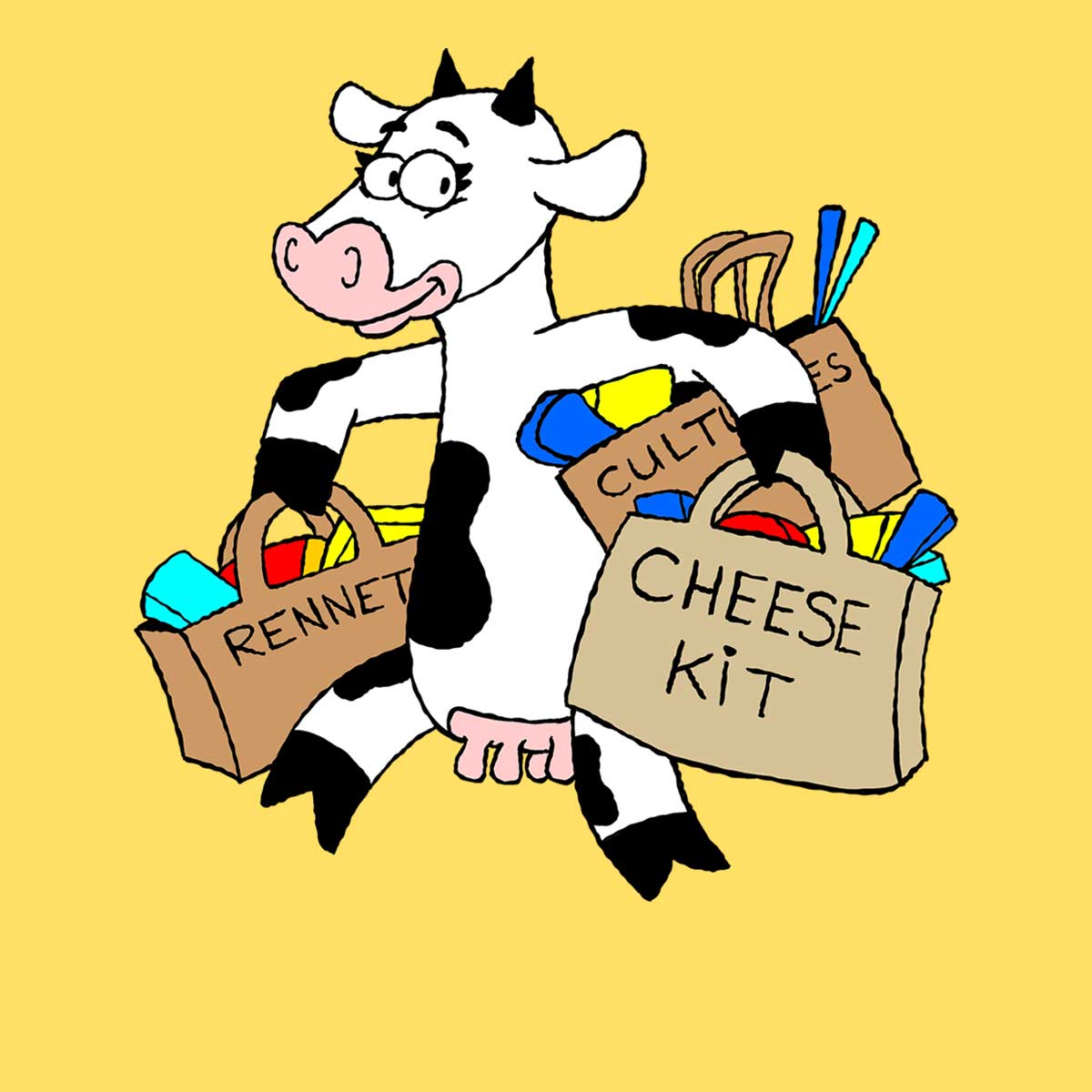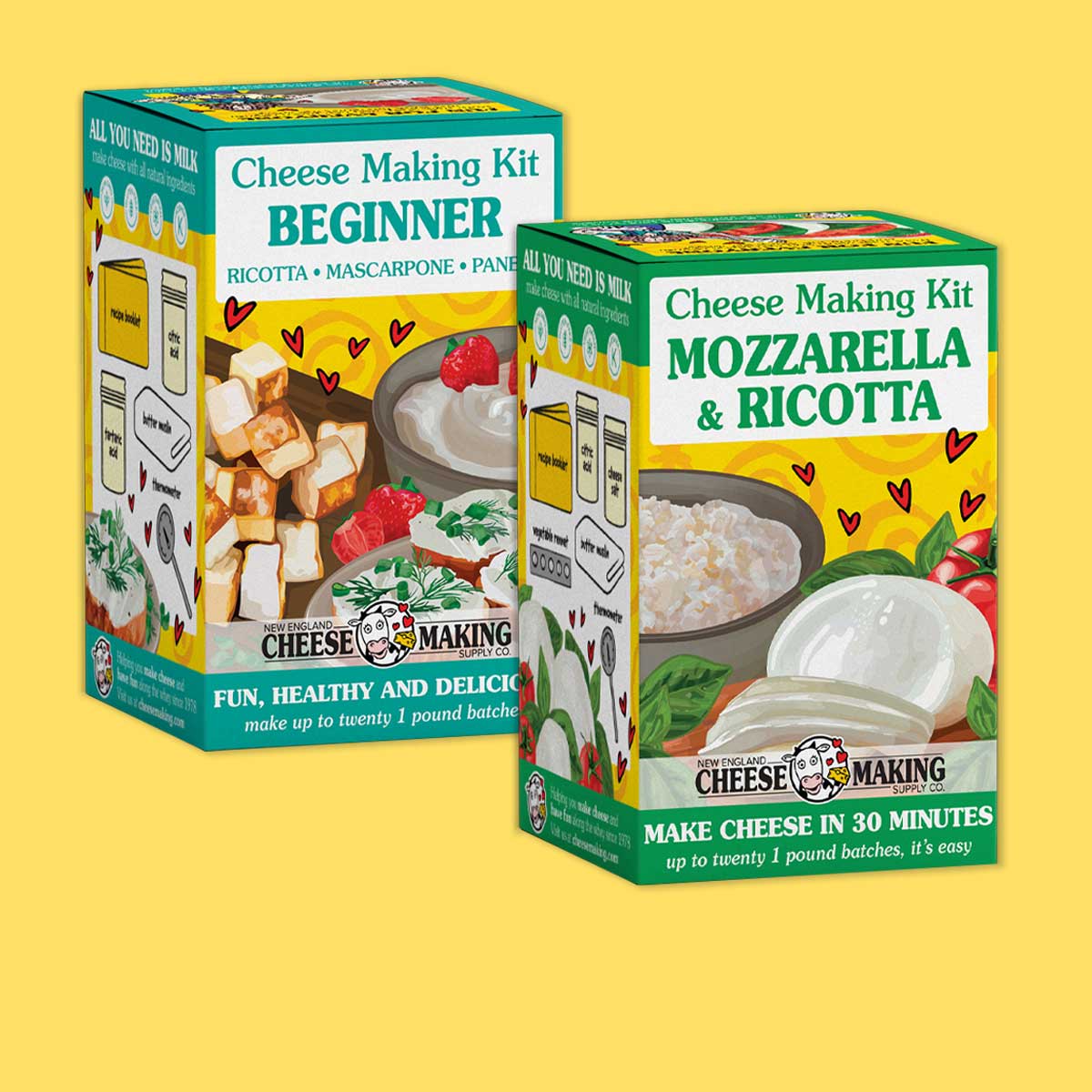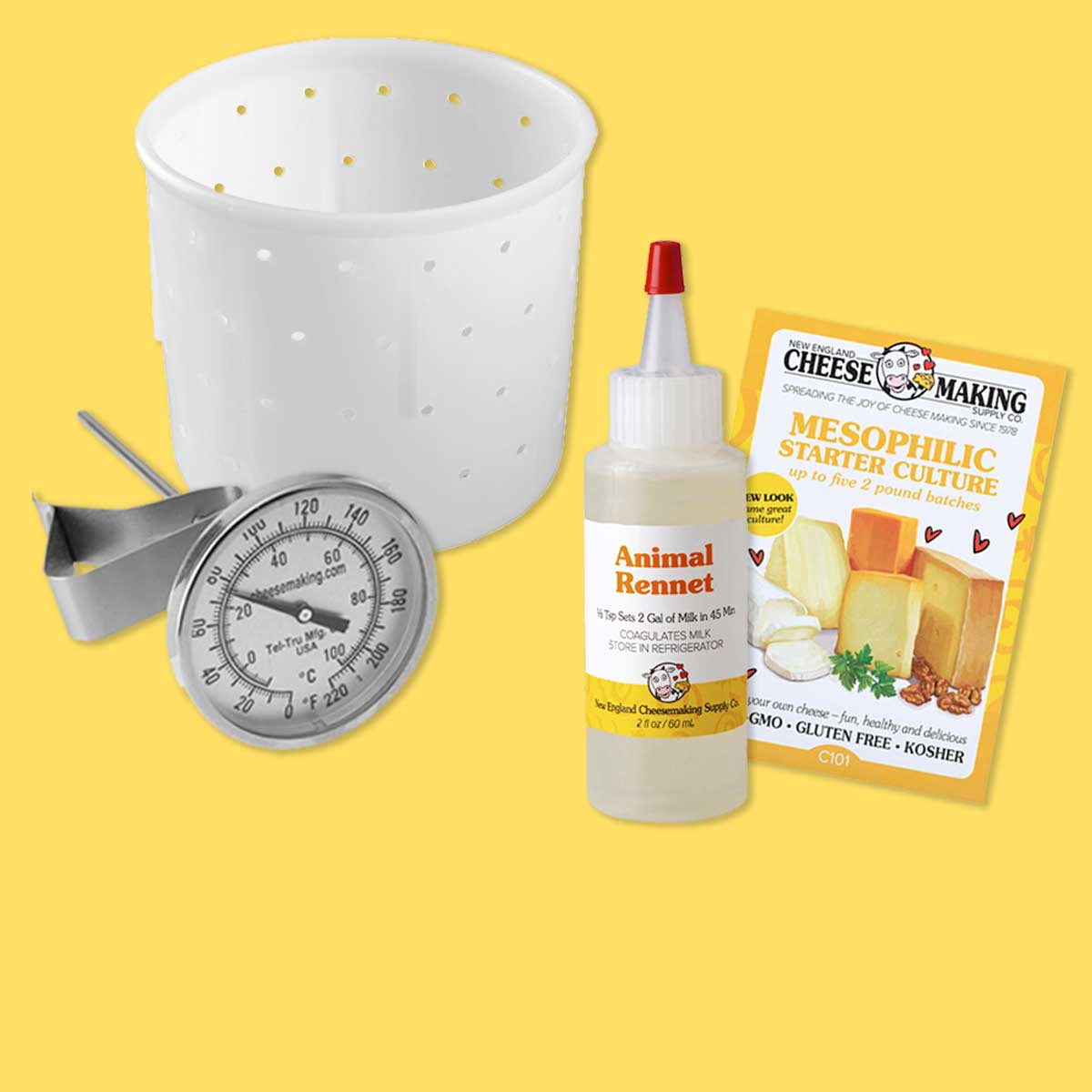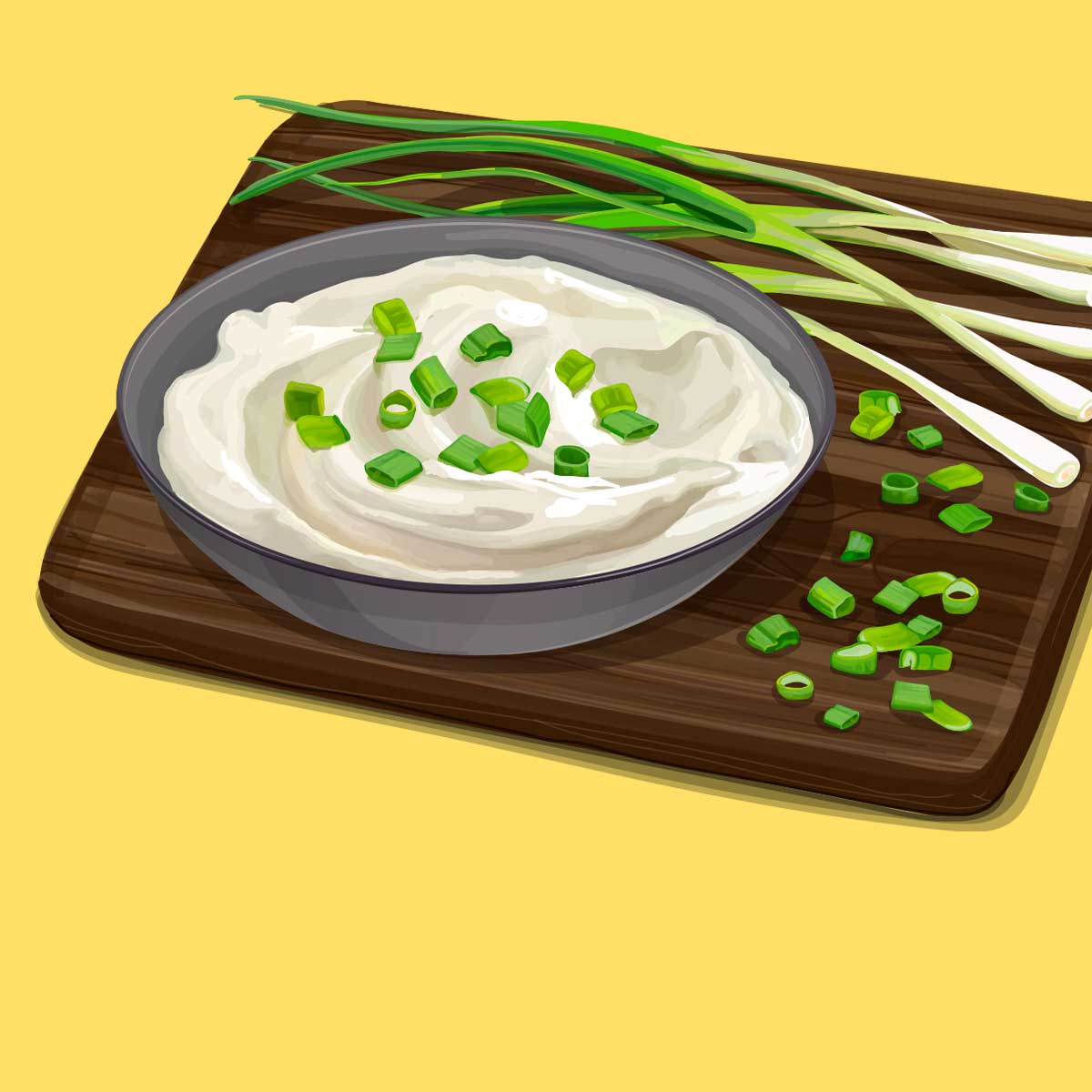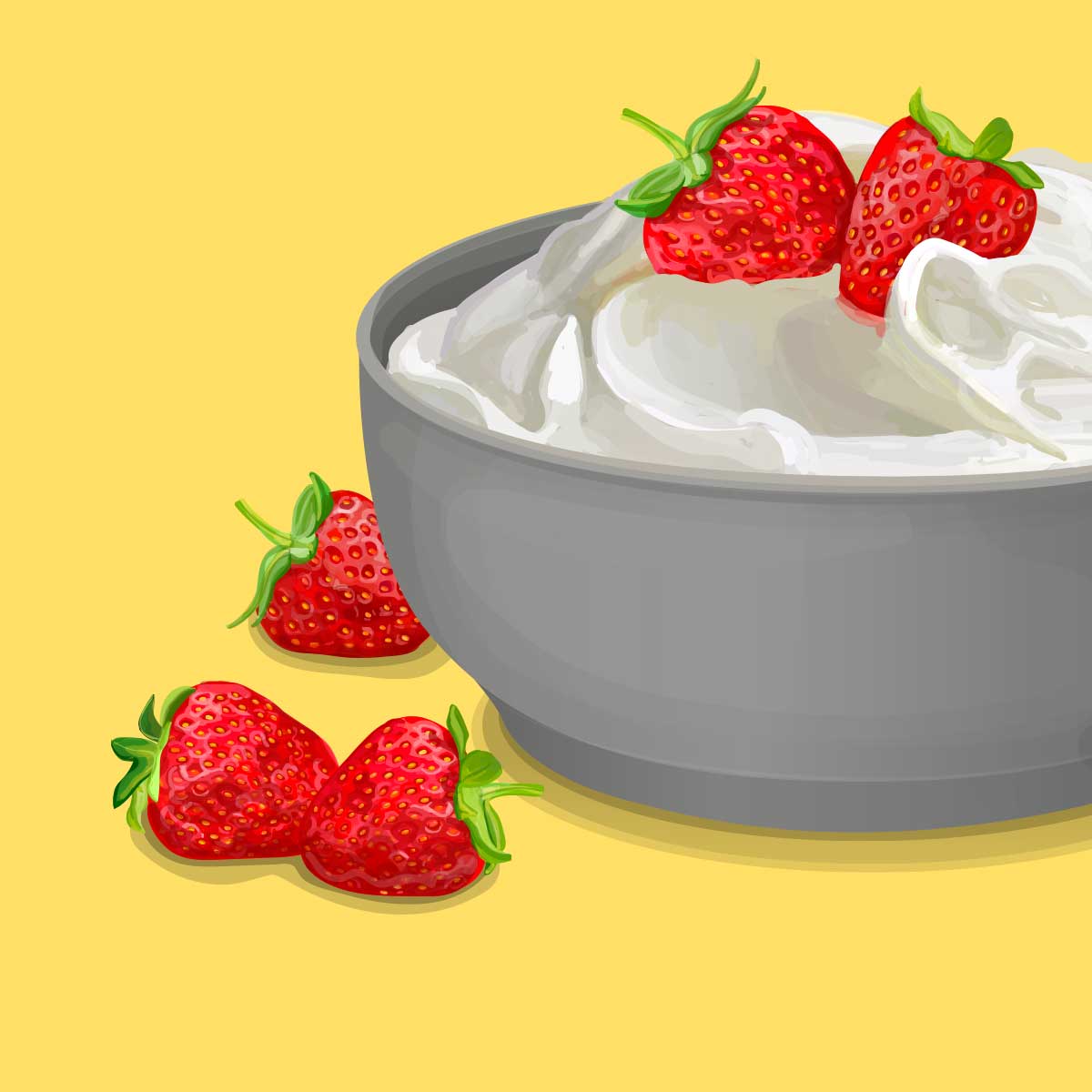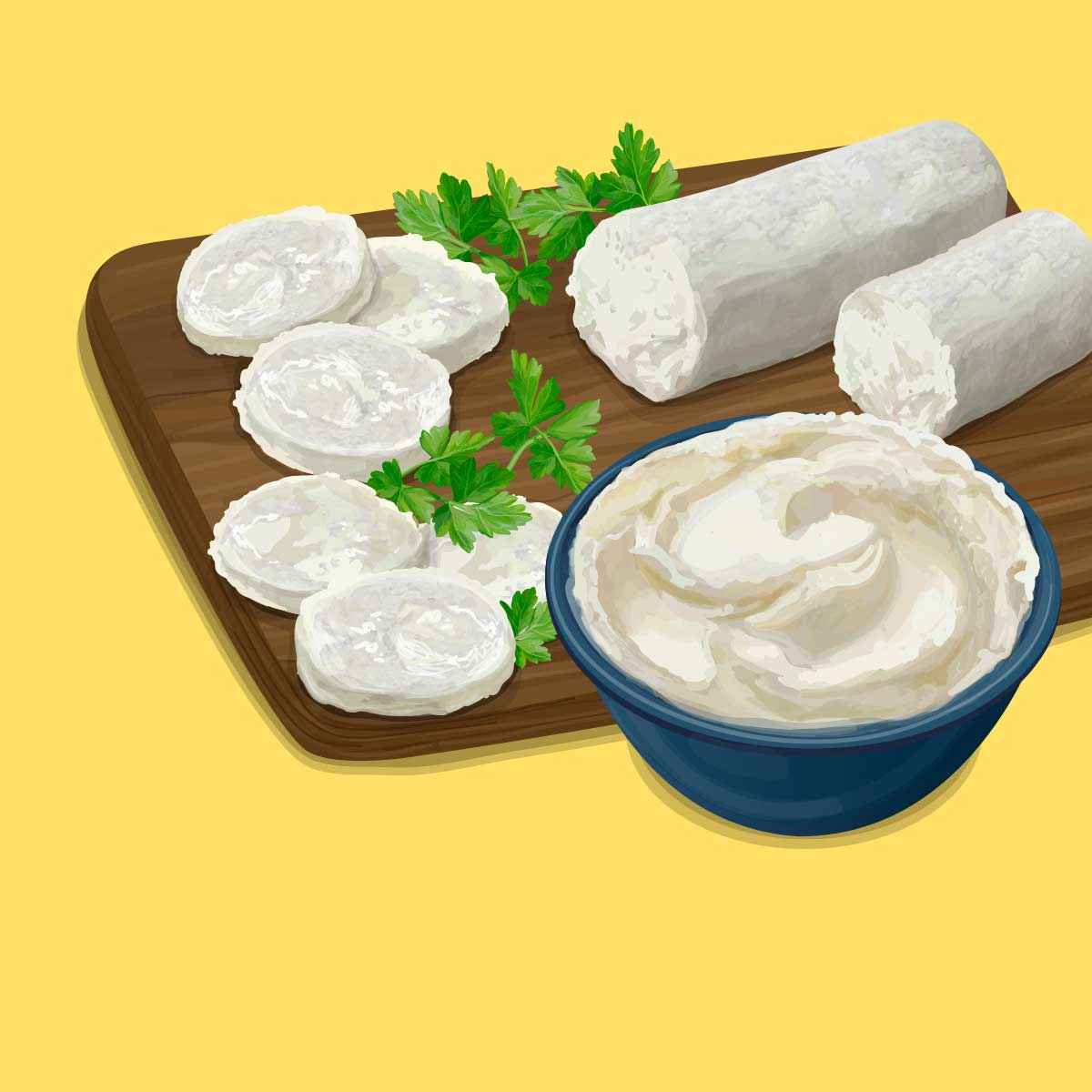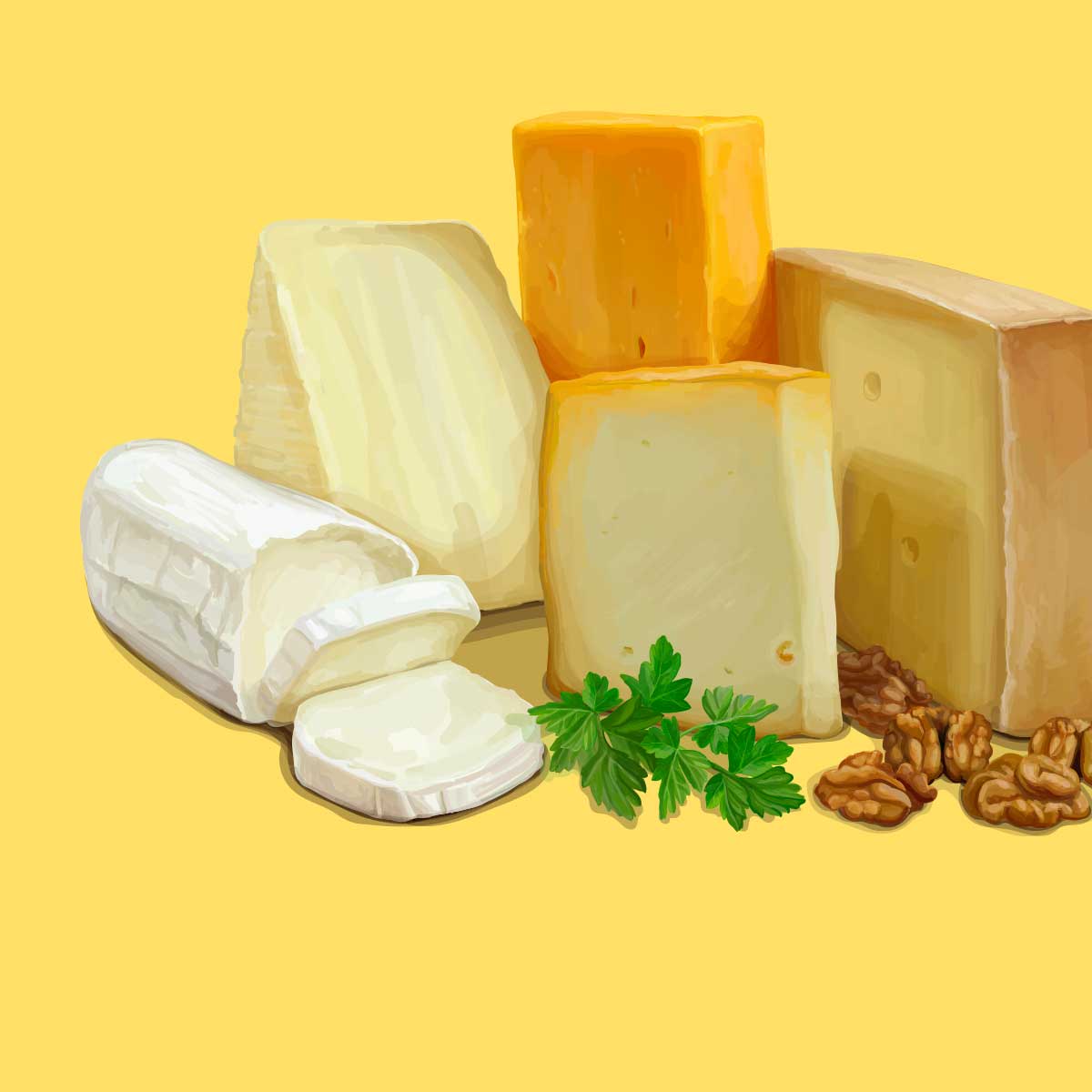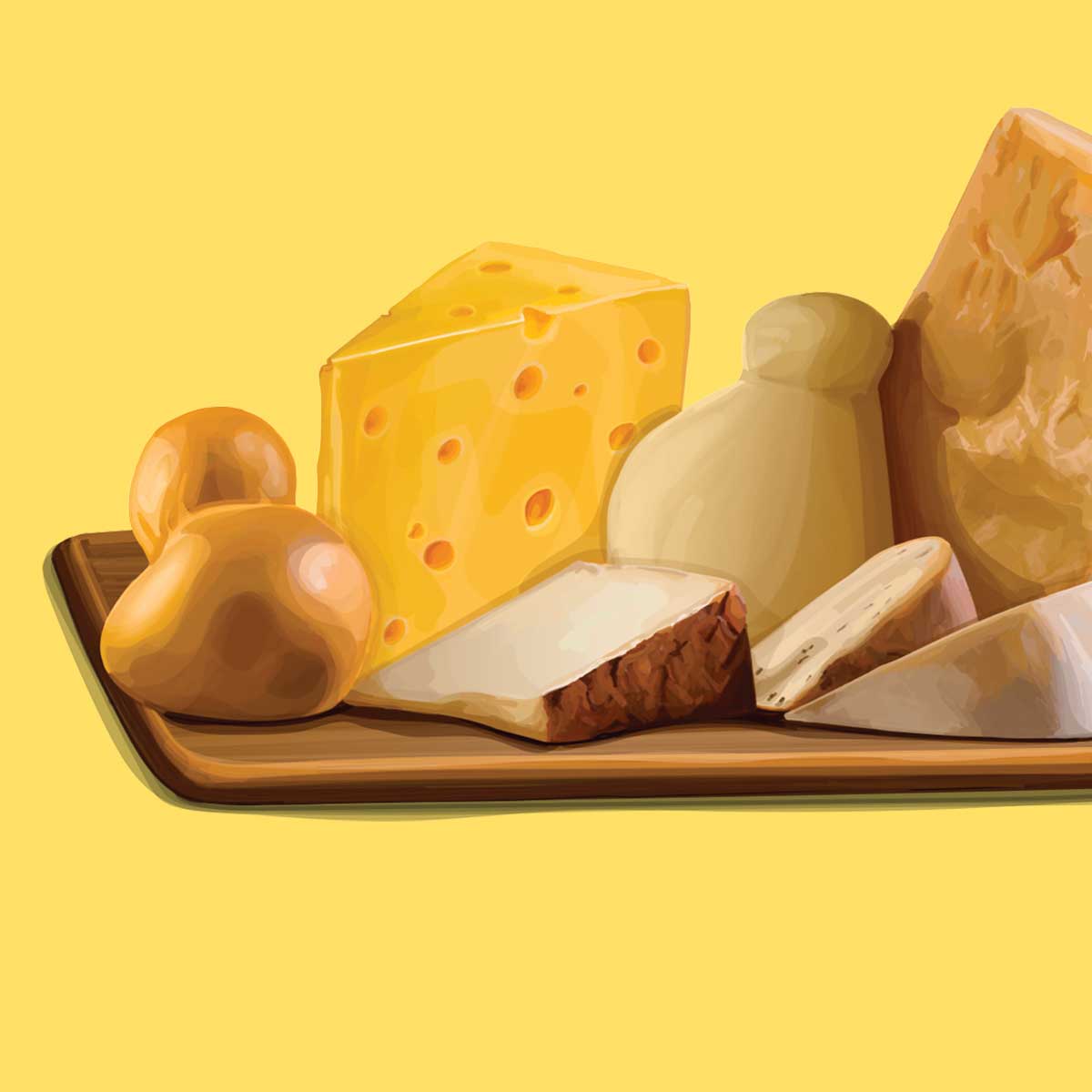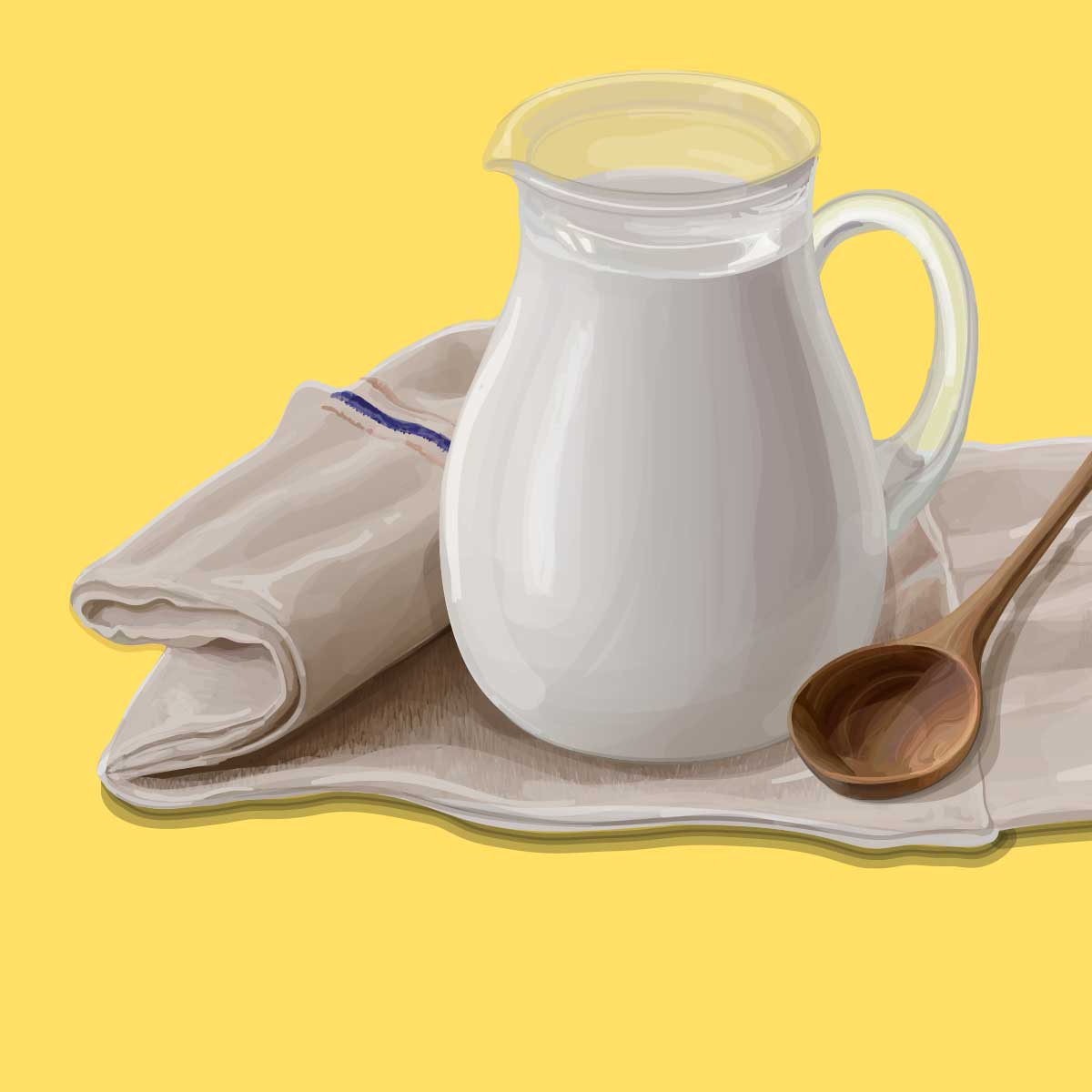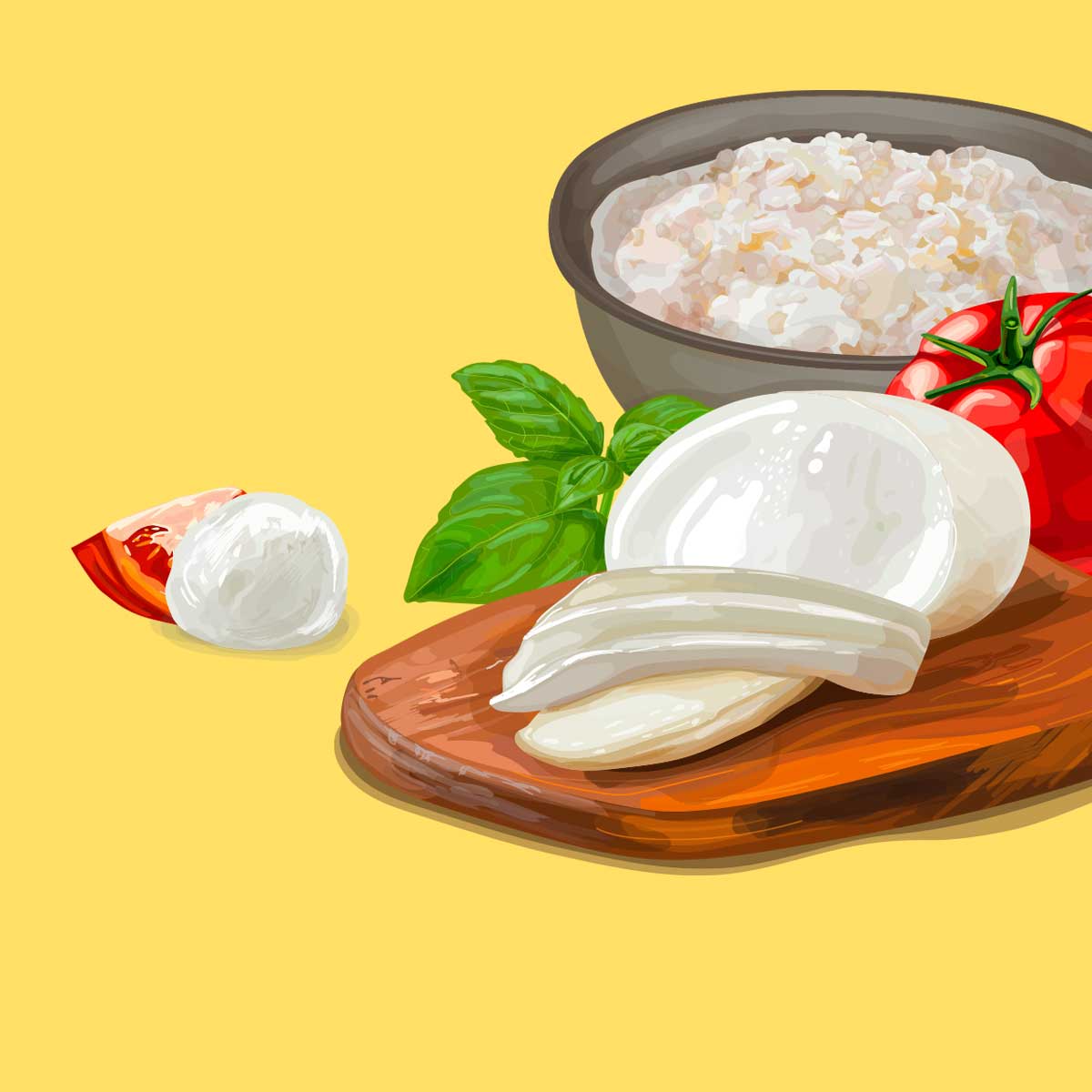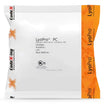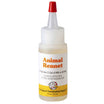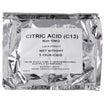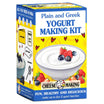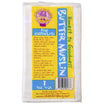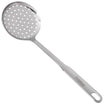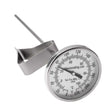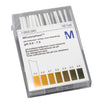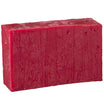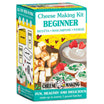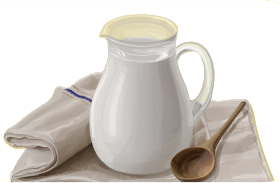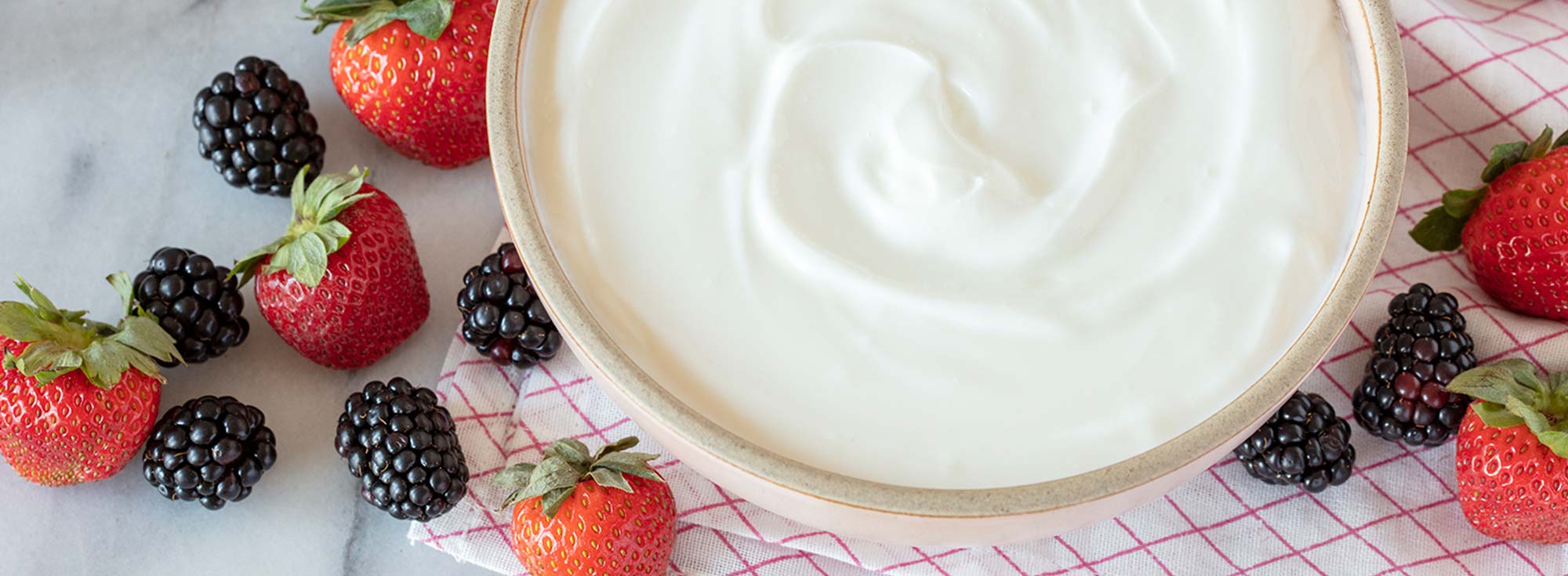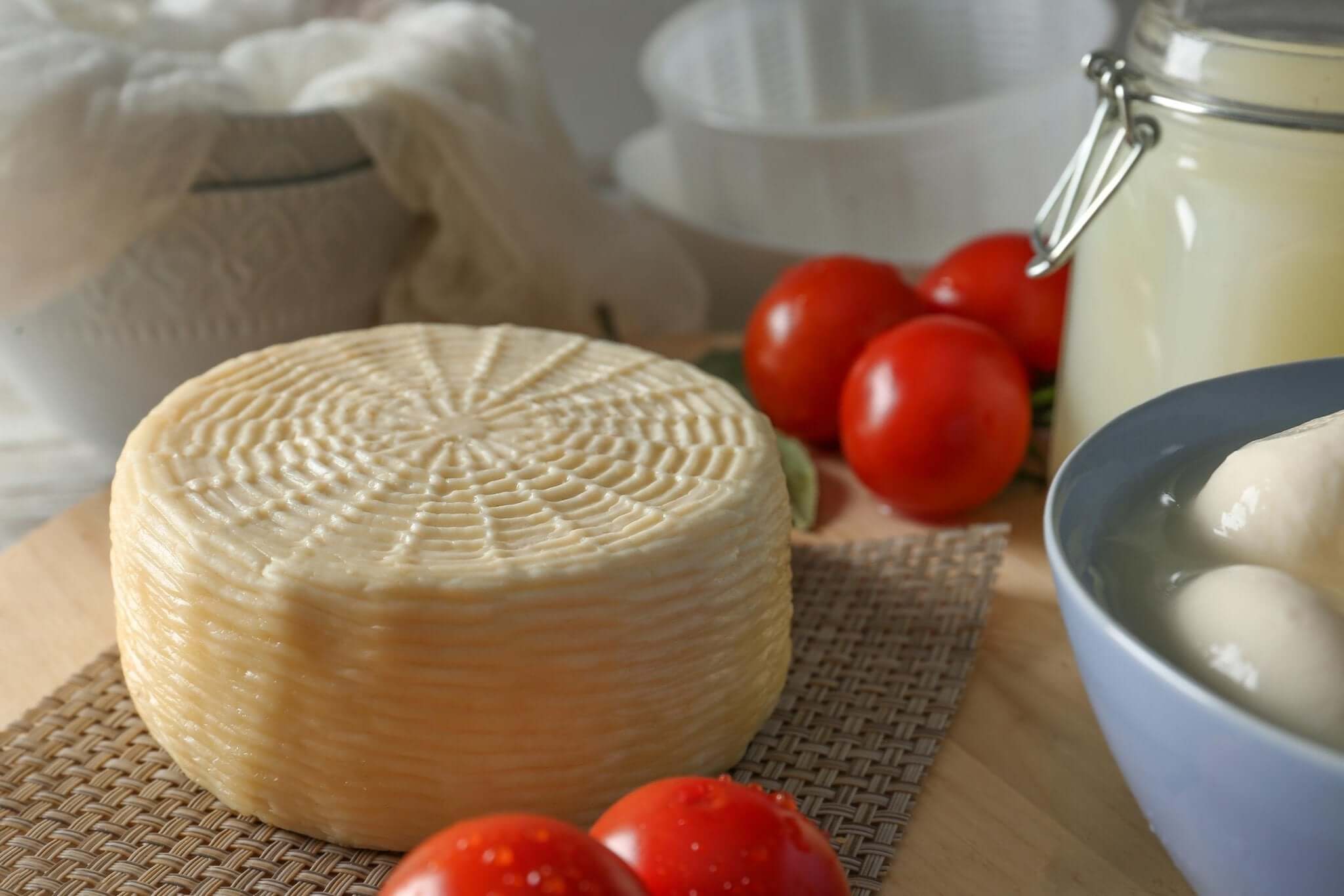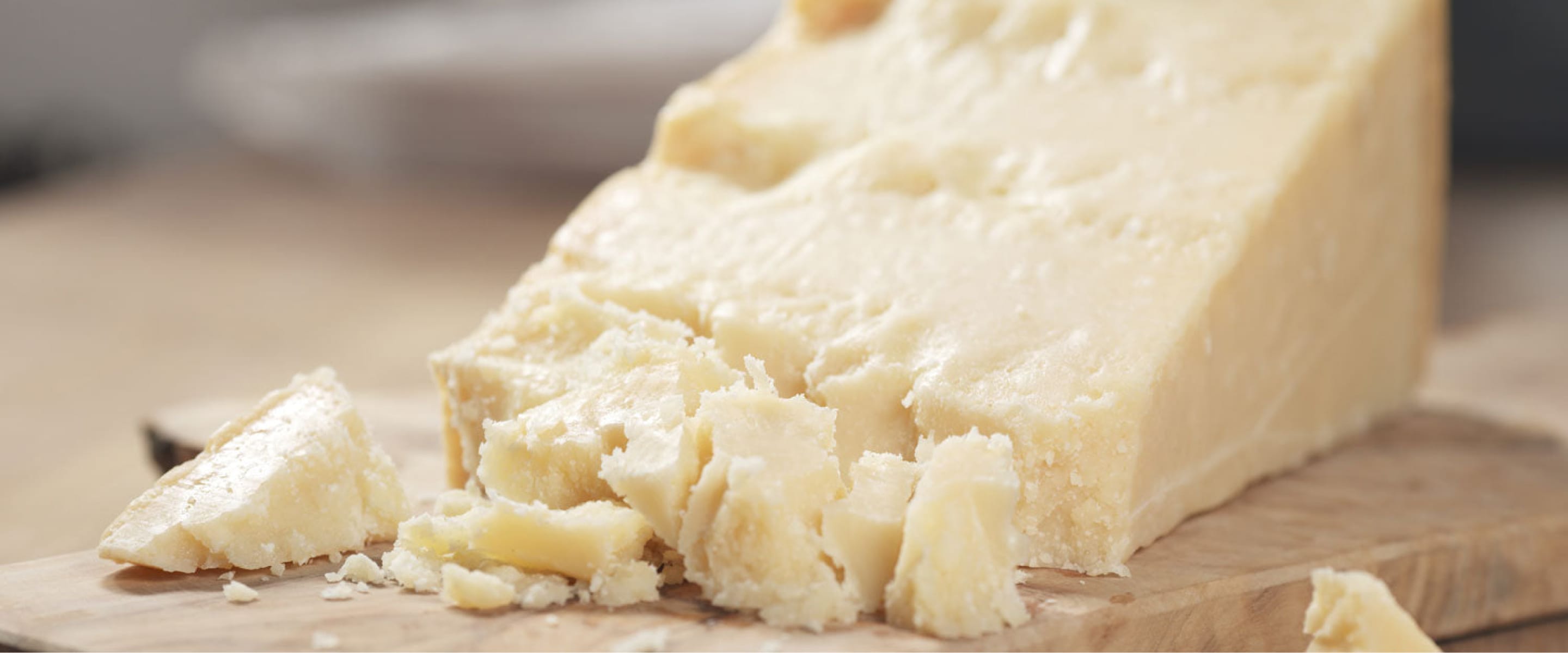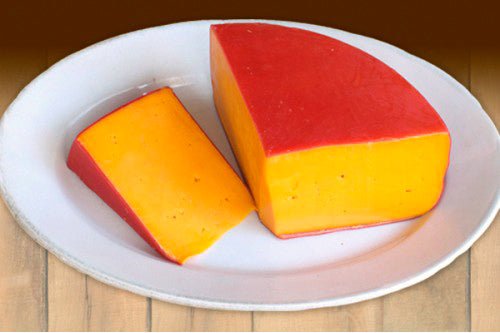
Farmstead Cheese Making Recipe
-
Yield
2 Pounds
-
Aging Time
~2 Months
-
Skill Level
Intermediate
-
Author
Jim Wallace

Farmstead Cheese Making Recipe Info
Farmstead Cheese Info
History of Farmstead Cheese
Variations in Style
Ingredients
Total price for selected items: Total price:
Instructions
A Recipe for Making Your Own Farmstead (or Homestead) Cheese
I make this cheese on my stove top in a moderate 3-5 gallon size in keeping with the idea of a kitchen cheese. The photos shown below are of a 4 gallon batch but the written recipe is for 2 gallons of milk and will make about 2 lbs of cheese.
The ingredients, molds, weights, etc. are for a 2 gallon batch. This recipe can, however, be scaled up proportionately to the milk volume you would like to work with.
This recipe is so simple that I might go as far as to say that this should be one of the first hard aged cheeses a start-up cheese maker should make.
-

Acidify & Heat Milk
Begin by heating the milk to 88°F (32°C). You do this by placing the milk in a pot or sink of very warm water. If you do this in a pot on the stove, make sure you heat the milk slowly and stir it well as it heats.
If you opt to use the annatto for coloring your cheese, the final color is rather subjective, so anywhere from 2-8 ml for this volume of milk should give you a pale gold to deep red orange. This can be added as you are heating the milk, being sure to stir it well.
All pasturized and cold stored milk should have 1/4-1/2 tsp calcium chloride added to replace the usable calcium that has been lost. This can be added as you are heating the milk, being sure to stir it well.
Once the milk is at 88°F, the culture can be added.
Note: I sometimes find that the entire pack can be a bit much for the 2 gallons, so try adding only 3/4 of the pack if you are having problems with the cheese being sour in flavor and crumbly.
To prevent the powder from caking and sinking in clumps, sprinkle the powder over the surface of the milk and then allow about 2 minutes for the powder to re-hydrate before stirring it in. The milk then needs to be kept at 88F for about 60 minutes.
-




Coagulate with Rennet
Add about 1/2 tsp or 2.5ml of single strength liquid rennet.
The milk now needs to set still for 30 minutes while the culture works and the rennet coagulates the curd.
The milk will start to thicken at about 8-10 minutes. In the Ehle book, Mrs. Kirby talks about an age old trick to see this thickening; a piece of clean toothpick is dropped on the surface, and when this becomes dead still, the milk is beginning it's final stage of coagulation. Multiplying this by 3.5 should give you the 30 minute coagulation you need for this cheese.
The thermal mass of this milk should keep it warm during this period. It is OK if the temperature drops a few degrees during this time.
-




Cut Curd & Release Whey
When the coagulation is complete, it is time to cut the curds and release the whey. You can easily see the quality of your coagulation by inserting the flat of a knife blade at an angle into the curd and then lifting straight up. If the edges are clean breaks and the whey pools neither too clear nor too cloudy in the gap, you have a good curd for cutting.
The curd now needs to be cut into 3/8 to 5/8 inch pieces, using a knife to make the vertical cuts and a spoon or ladle for the horizontal cuts. The curd may not be even in size, but do the best you can in cutting. After the cutting, the curd needs to be stirred slowly but steadily at the original temperature for about 5-10 minutes. This will cause some whey to be released, allowing the curds to move freely. The surface will begin to firm up slightly as well.
As the curds release whey, the surface firms up. The large curd piece (being held in the photo above) shows a skin forming and drying off the exterior. However, when the curd is broken open, it is very soft, wet and tender inside. This is why we take a very long time to dry out the curd in the next step. If the skin becomes too firm and thick, as in heating too quickly or stirring too fast, it will be difficult to dry out the inside of the curd. This will result in a wet curd going into the mold and problems in aging.
-




Cook the Curds
Now it is time to begin drying out the curds. This will be done by increasing the heat slowly to 102°F. The heat needs to be increased slowly at about 2-3°F every 5 minutes at the beginning. The total cooking time will be 30-45 minutes.
Once the curds are at temperature, they should be stirred in the whey just enough to keep them separated and moving. The bacteria are still developing the needed acidity and the curds will be drying out during this period. This should be done for another 1-1.5 hrs depending on the dryness of the cheese desired. During this stirring time, at 15 minutes intervals, allow the curds to settle for a few minutes but do not allow the curds to mat together, then remove about a pint or two of whey before stirring again.
Stirring these curds in the whey like this will give them access to the lactose rich whey for further acid development, as well as allow for easier movement of the curds.
The final curds should be cooked well through and should be examined to make sure that enough moisture has been removed. A broken curd should be firm throughout and the curds should have a moderate resistance when pressed between the fingers.
When this point is reached, the curds can be allowed to settle under the whey
-




Remove Whey & Salt Curds
The dry curds can now be transferred to a colander lined with butter muslin. They should be allowed to drain for 30 minutes and a gentle stirring will make sure that the whey drains off.
At the point of final whey drainage, the curd will have reached its final moisture and acid development and should be salted immediately to stop the action of the bacteria. About 2% salt should be added according to final curd weight (approx 2 lbs). This should be about .62 oz or about 3 tsp of salt. Add this in two doses and allow it to dissolve between doses, before moving to filling the molds.
-



Form the Curds
Once the curds are drained and salted, they are ready for the mold. Prepare the mold and cloth by sanitizing, then line the mold with the cloth and transfer the curds using a good hand pressure to pack the curds in tight.
For pressing I use our Hard Cheese Press, but it is possible to make a simple lever press (sometimes known as a dutch press). The illustration above is a simple schematic from the 1934 brochure Making American Cheese on the Farm, it's a good guide to follow.
-




Press the Curds
Now, for pressing, we should begin very light and slowly increase the press weight to a moderate level:
- 60 minutes at 10 lbs
- 3 hours at 25 lbs
- 18 hours at 50 lbs turning once midway and returning to press
The rate of whey running off is initially a thin stream, tapering to steady drops of whey being released. This is a good rate of whey removal during pressing and will slow even more as the residual free moisture is released. You should see whey weeping from the form very slowly. When this stops, you can increase the weight slightly. The cheese should be removed from the press, unwrapped, turned, re-wrapped, and put back to the press at the above intervals to assure an even consolidation. At each turn you will notice the cheese has formed a smoother surface and rests lower in the mold.
- The cheese should begin coming together after the first or second press cycle but you may still notice some gaps and holes between the curds
- By the end of the third cycle (50 lbs) it should be well consolidated as shown above.
- If you still see some openings in the surface, due to a dry curd, then increase the press weight to 75 lbs and press until the cheese forms a tight surface with no openings such as in the photos below:
-



Final Preparation & Aging
The cheese should be allowed to surface dry for about 1-5 days (this will depend on room conditions). Flip the cheese twice a day and watch for the surface to darken a bit.
The cheese can now be waxed for aging. For details on waxing, click here. I have waxed this one but a bandage can also be applied, as shown on our Cheddar page.
I keep my wax in an inexpensive pan, I just let it cool when done and then it is always ready to melt for waxing.
Above we've also shared a photo from the 1934 brochure Making American Cheese on the Farm, it shows the once traditional home way of finishing cheese when cheese wax was not available to the home/farm cheese maker. This is a method of bandage wrapping.
The cheese can then be placed into your aging space at 52-56°F and 80-85% moisture.
The cheese can now be aged for 4-6 weeks and it will ready for your table.
Cheese Making Supplies
Related Products
You May Also Like



